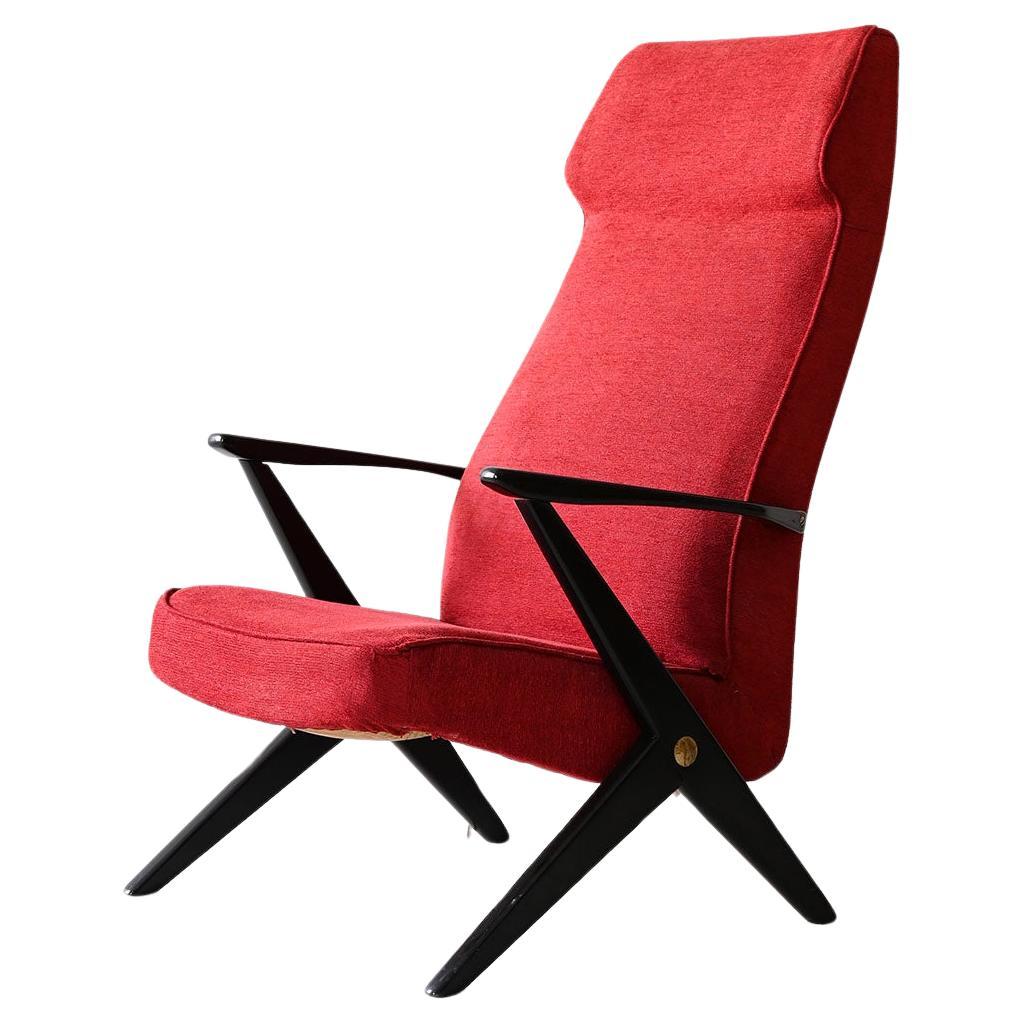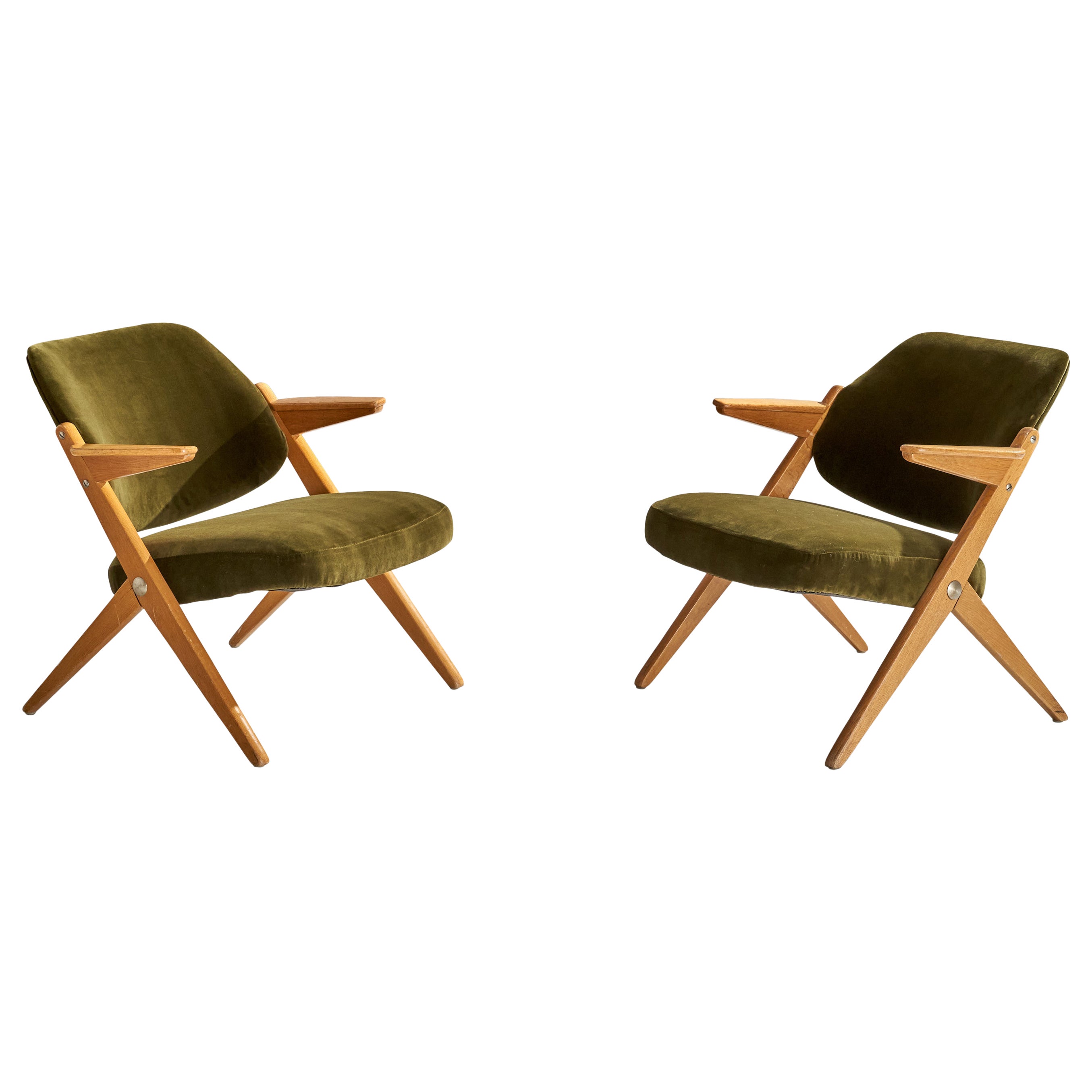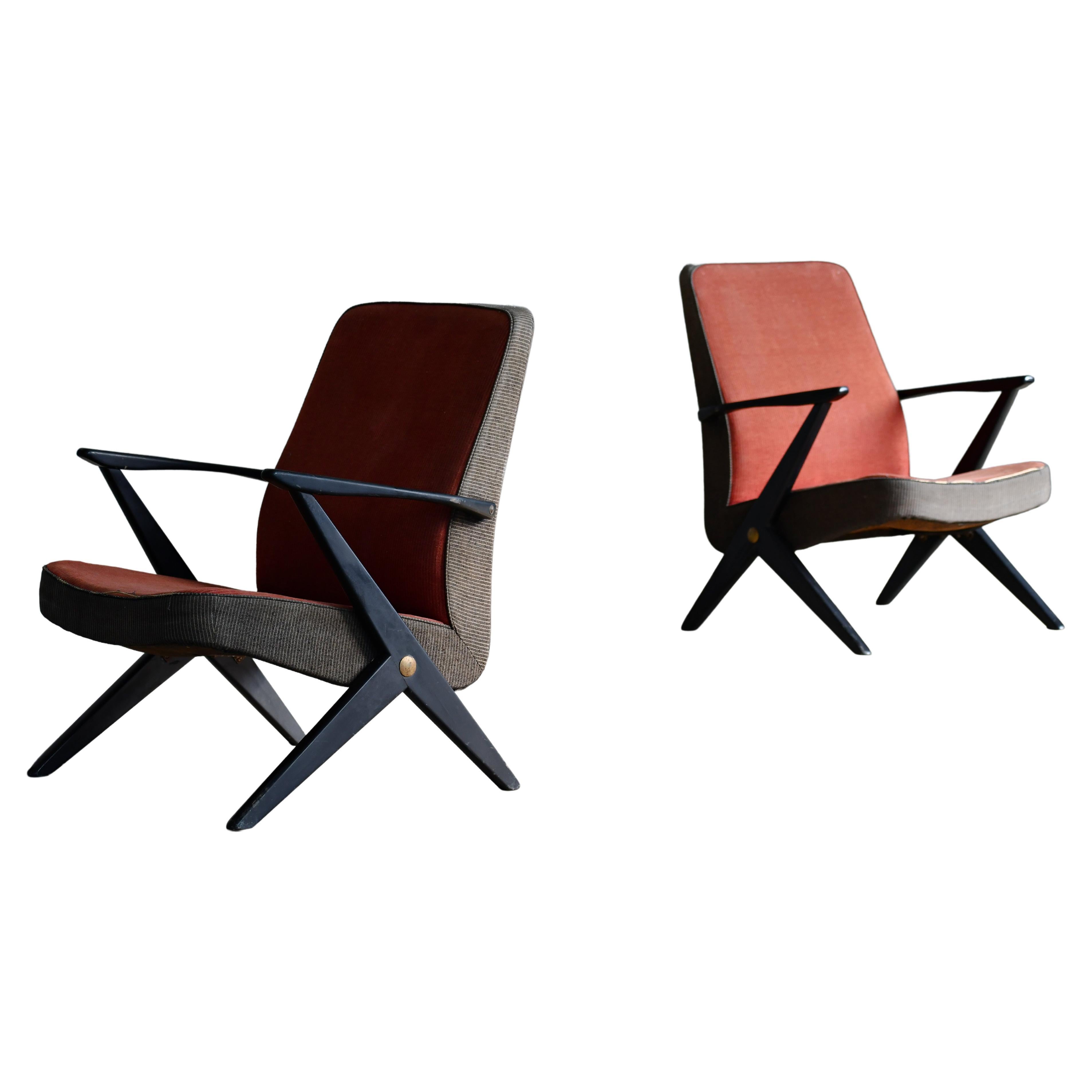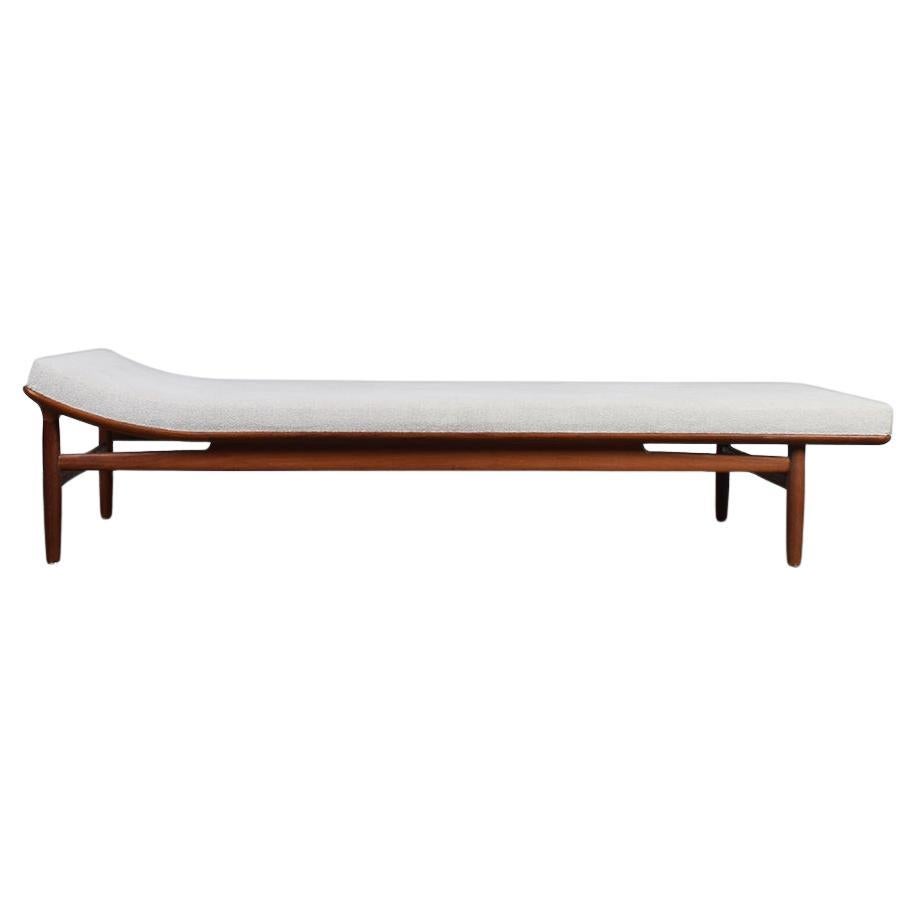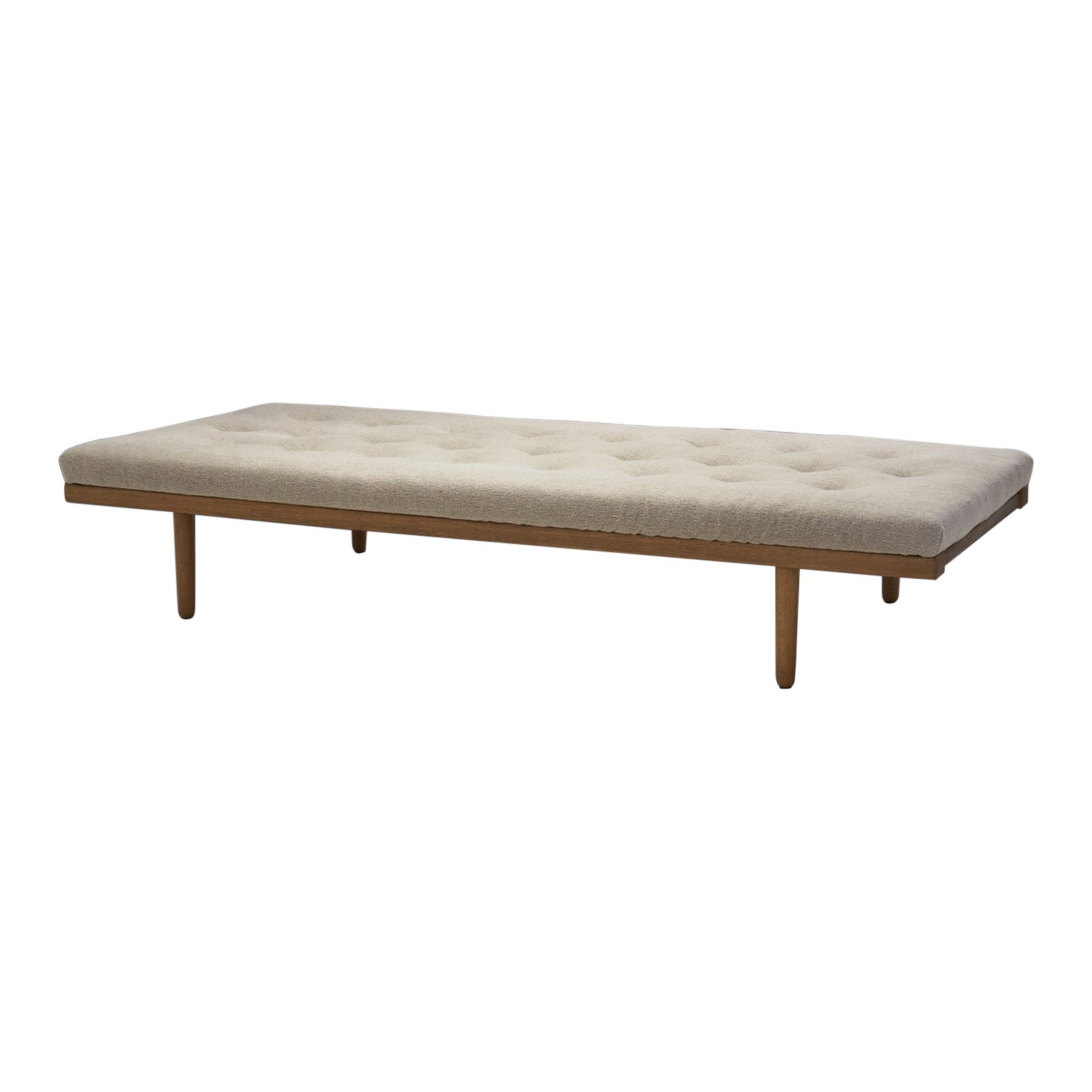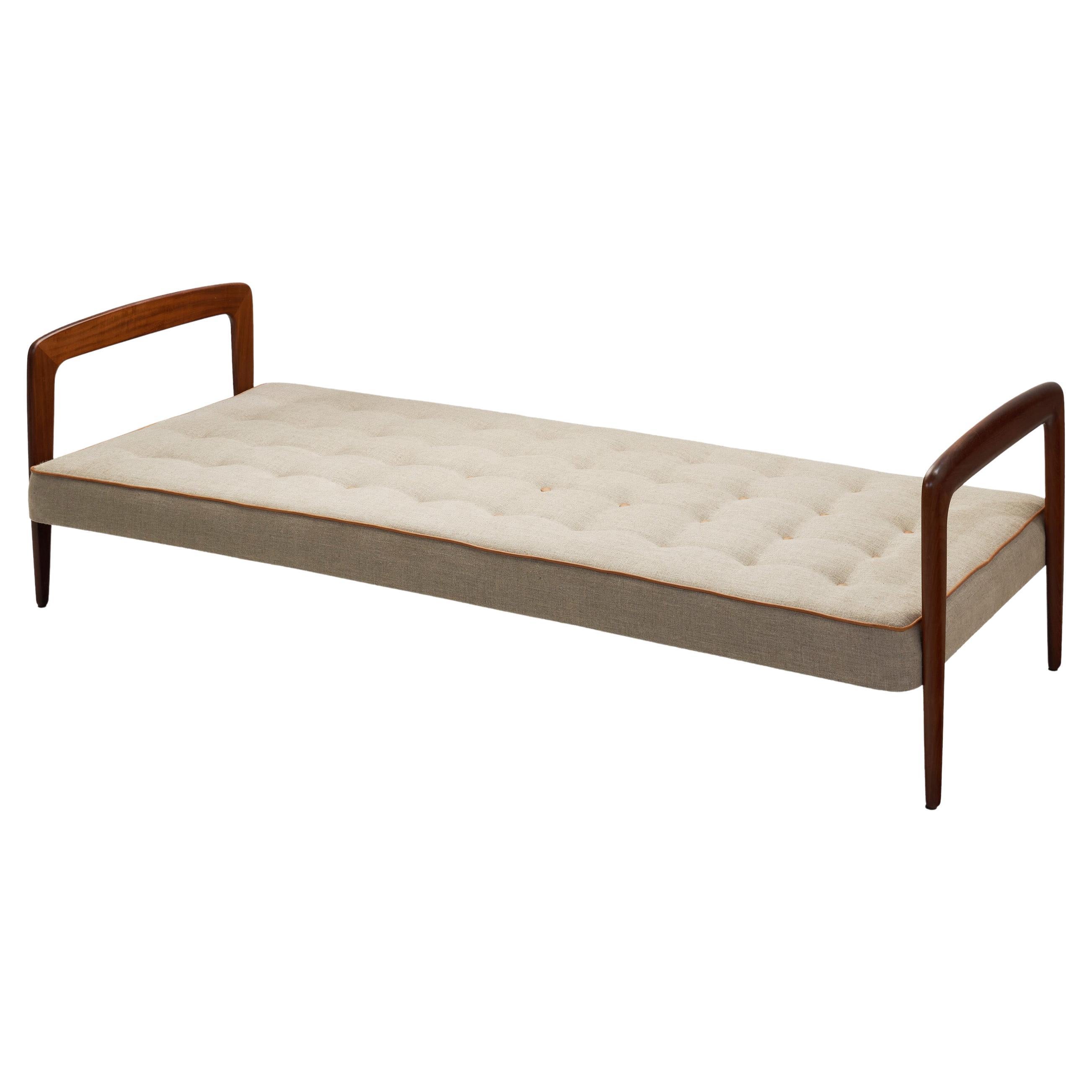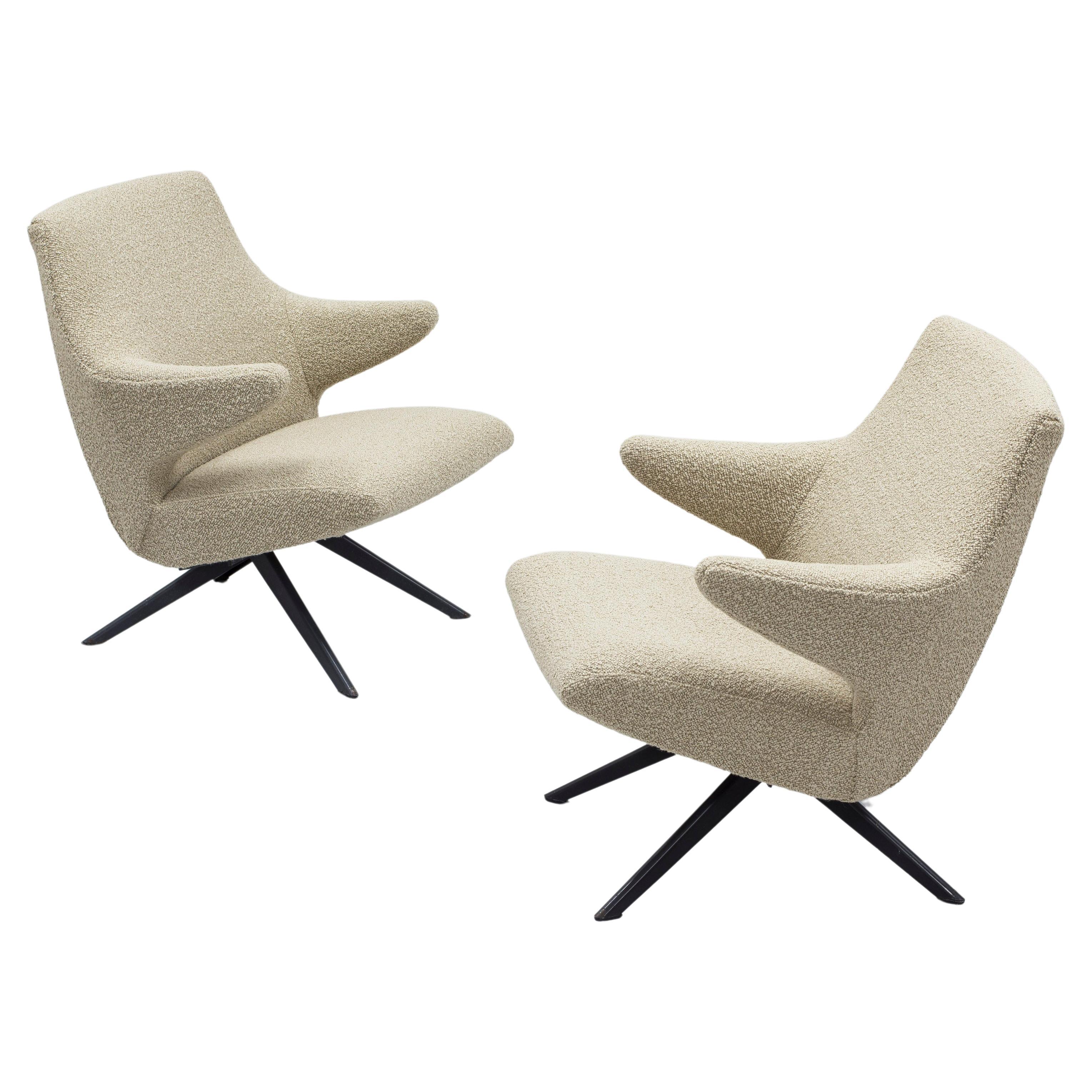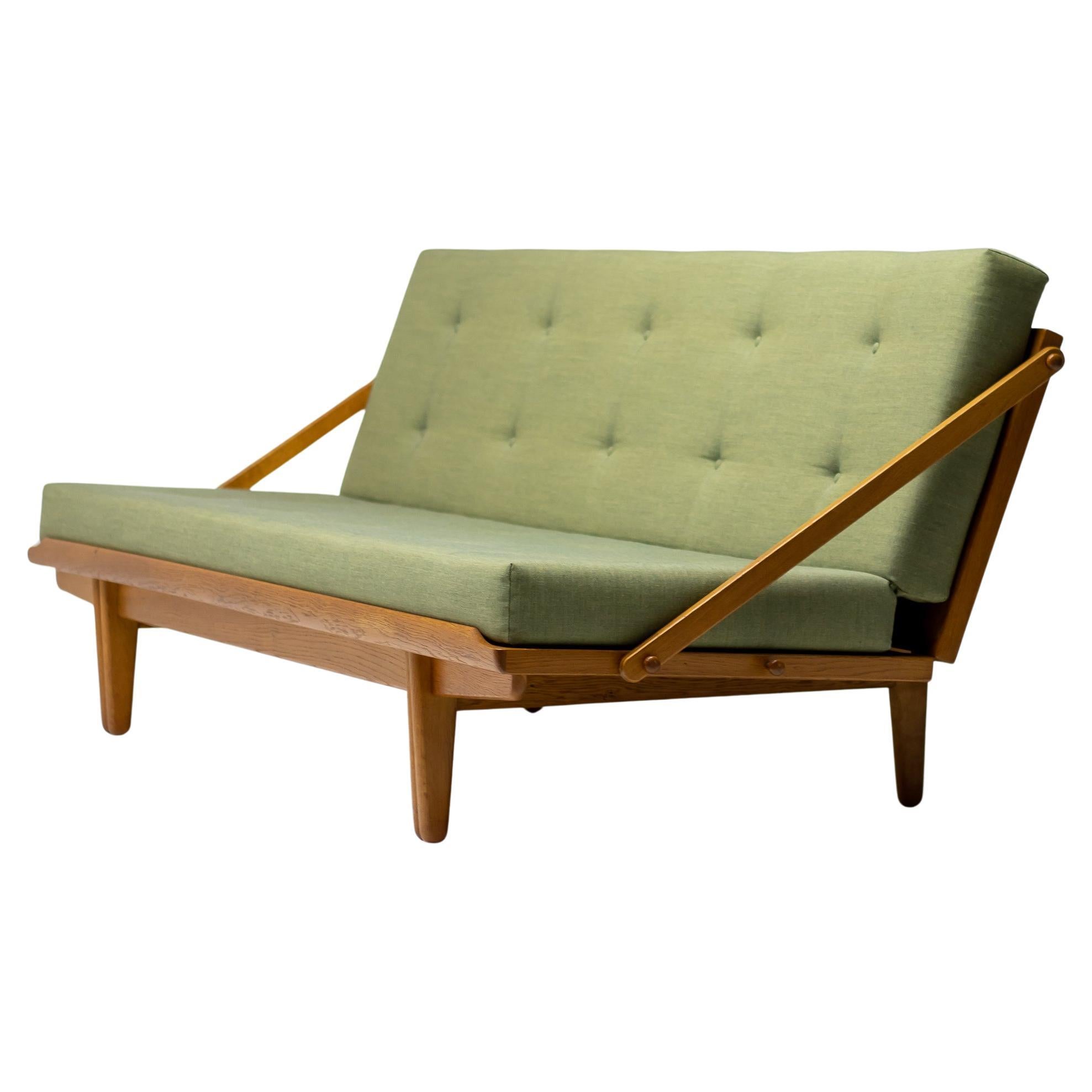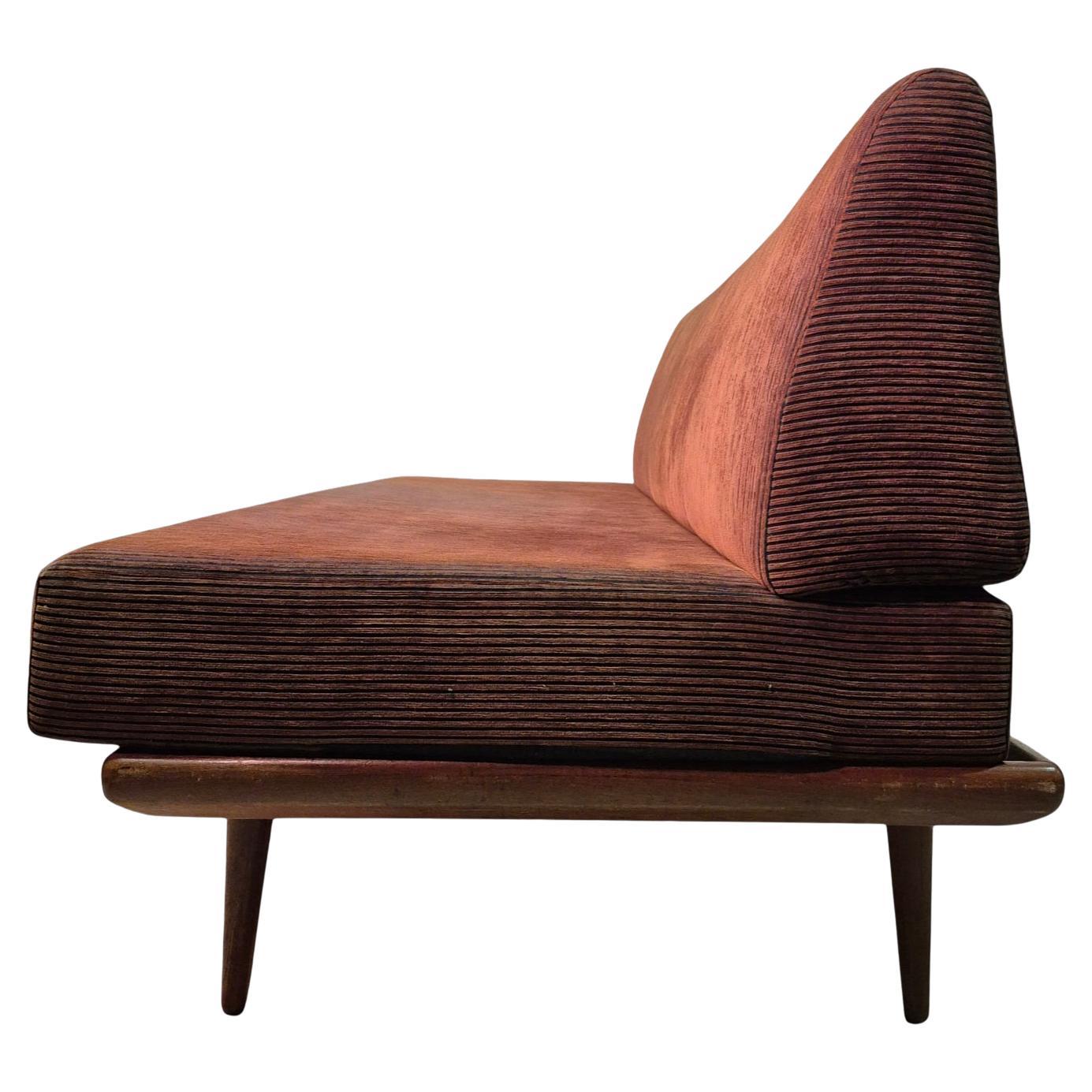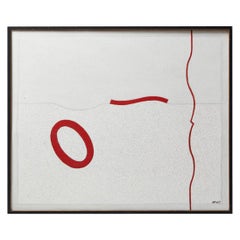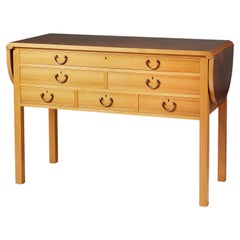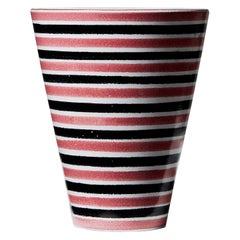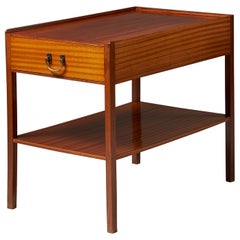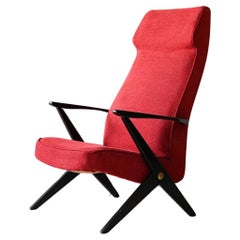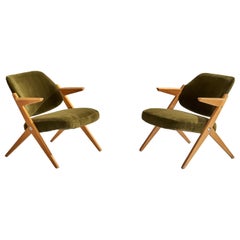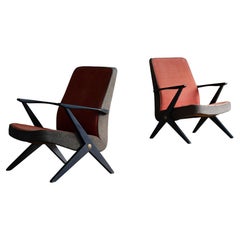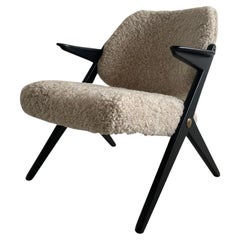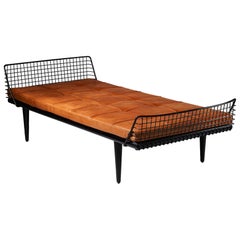
Daybed, Model “568-017” Designed by Bengt Ruda for NK, Sweden, 1950s
View Similar Items
Want more images or videos?
Request additional images or videos from the seller
1 of 15
Daybed, Model “568-017” Designed by Bengt Ruda for NK, Sweden, 1950s
$10,790.67List Price
About the Item
- Creator:Bengt Ruda (Designer)
- Dimensions:Height: 65 in (165.1 cm)Width: 106 in (269.24 cm)Depth: 93 in (236.22 cm)
- Style:Scandinavian Modern (Of the Period)
- Materials and Techniques:
- Place of Origin:
- Period:
- Date of Manufacture:1950s
- Condition:Wear consistent with age and use.
- Seller Location:Stockholm, SE
- Reference Number:1stDibs: LU1006618709042
About the Seller
5.0
Recognized Seller
These prestigious sellers are industry leaders and represent the highest echelon for item quality and design.
Gold Seller
Premium sellers maintaining a 4.3+ rating and 24-hour response times
Established in 1998
1stDibs seller since 2013
202 sales on 1stDibs
Authenticity Guarantee
In the unlikely event there’s an issue with an item’s authenticity, contact us within 1 year for a full refund. DetailsMoney-Back Guarantee
If your item is not as described, is damaged in transit, or does not arrive, contact us within 7 days for a full refund. Details24-Hour Cancellation
You have a 24-hour grace period in which to reconsider your purchase, with no questions asked.Vetted Professional Sellers
Our world-class sellers must adhere to strict standards for service and quality, maintaining the integrity of our listings.Price-Match Guarantee
If you find that a seller listed the same item for a lower price elsewhere, we’ll match it.Trusted Global Delivery
Our best-in-class carrier network provides specialized shipping options worldwide, including custom delivery.More From This Seller
View AllPainting by Bengt Orup, Sweden, 1950s
By Bengt Orup
Located in Stockholm, SE
Oil on canvas.
Signed.
Provenance: Bo Mattssons collection, Malmö.
W: 66,6 cm/ 2' 2 1/5"
H: 56 cm/ 1' 10"
D 2,7 cm cm/ 1"
Category
Vintage 1950s Swedish Mid-Century Modern Paintings
Materials
Paint
Sideboard Model 1148 Designed by Josef Frank for Svenskt Tenn, Sweden, 1950s
By Josef Frank
Located in Stockholm, SE
Sideboard model 1148 designed by Josef Frank for Svenskt Tenn,
Sweden, 1950s.
Walnut and alder root veneer.
This sideboard model 1148 with two clever extension flaps was designed b...
Category
Mid-20th Century Swedish Mid-Century Modern Sideboards
Materials
Walnut
Vase Designed by Stig Lindberg for Gustavsberg, Sweden, 1950s
By Stig Lindberg
Located in Stockholm, SE
Vase designed by Stig Lindberg for Gustavsberg,
Sweden. 1950s.
Stoneware.
Dimensions:
Height: 16 cm/ 6 1/3"
Diameter: 13/ 5 1/8"
Stig Lindberg was one of the most influential Swe...
Category
Vintage 1950s Swedish Scandinavian Modern Ceramics
Materials
Ceramic, Stoneware
Bedside Table Model 914 Designed by Josef Frank for Svenskt Tenn, Sweden, 1950s
By Josef Frank
Located in Stockholm, SE
Bedside table model 914 designed by Josef Frank for Svenskt Tenn,
Sweden, 1950s.
Mahogany veneer and brass handle.
Josef Frank’s elegant bedside table model 914 with sophisticated brass handles is one of Svenskt Tenn’s timeless classics. It works very well combined with modern or antique pieces. The overall simplicity of form and use of luxurious wood are characteristic of Josef Frank.
L: 65 cm
W: 40 cm
H: 55 cm
Josef Frank was a true European, he was also a pioneer of what would become classic 20th century Swedish design and the “Scandinavian Design Style”.
Austrian- born Frank started his design career as an architect after having trained at the Technische Hochschule in Vienna between 1903 and 1910. After his training he went on to teach at Kunstgewerbeschule (The Viennese School of Arts and crafts) where he developed and espoused the new school of modernist thinking towards Architecture and Design that was coming to fruition in Vienna at the time. He also went on to lead the Vienna Werkbund throughout the 1920s. This was a truly progressive group of Architects and Designers who set about improving the daily lives of Austrian people through modernist design and architecture in partnership with Arts and Crafts ideals and construction. Frank’s leadership of the Werkbund had already cemented his place at the forefront of European design.
Frank’s time in Vienna was typified by his design for the “Die Wohnung” exhibition of the Deutscher Werkbund in Stuttgart, 1927 where he exhibited along side his contemporaries at the forefront of design, such as the likes of Le Corbusier and Walter Gropius. Here he showed a specially designed pair of flat-roofed reinforced concrete houses in what is now seen as a typical modernist style.
What separated Frank’s house from the other 32 houses of the exhibition was the interior and furniture inside the building. It was described as “Neo-Classical” and filled with an eclectic mix of period pieces, modern design and pieces designed by Frank himself that seemed to cross the two worlds. This was a complete opposite direction to that which his fellow Architects were travelling in with their pared back and angular aesthetics. Frank said of his own work: “The house is not a work of art, simply a place where one lives,” and by this reasoning Frank rejected the regimental mechanisation of the living space that his contemporaries believed in, instead he set about creating congenial and spontaneous interiors. Frank’s practice saw him placing the bright colours and the soft forms of nature back into the furnishings and interiors that he thought modernism sorely mist.
Frank, along with Oskar Walch set up Haus und Garten in Vienna in 1925. This was Frank’s first commercial foray into furniture and home furnishings and the company went on to become the most influential furnishing house in Vienna with a riotous depth of colour and interesting shapes becoming the trademark of their design. However this success was to come to an end with rise of Nazism in Vienna in the early 1930’s. Frank was Jewish, and he and his wife Anna decided they would leave Vienna for her motherland: Sweden, in 1933. Frank continued to design for Haus and Garten, visiting Vienna occasionally and designing the pieces that would continue to be the company’s best...
Category
Vintage 1950s Swedish Mid-Century Modern Side Tables
Materials
Brass
Bowl Veckla Designed by Stig Lindberg for Gustavsberg, Sweden, 1950s
By Stig Lindberg
Located in Stockholm, SE
Bowl Veckla designed by Stig Lindberg for Gustavsberg,
Sweden. 1950s.
Stoneware.
Dimensions:
H: 16 cm/ 6 1/4''
L: 29 cm/ 11 1/2''
Stig Lindberg’s “Veckla...
Category
Vintage 1950s Swedish Scandinavian Modern Vases
Materials
Stoneware
Vase, Tulip, Designed by Nils Landberg for Orrefors, Sweden, 1950s
By Nils Landberg
Located in Stockholm, SE
Vase, Tulip. Designed by Nils Landberg for Orrefors,
Sweden. 1950's.
Glass.
Dimensions:
H: 47 cm / 1' 7''
D: 11 cm / 4 1/4''
Category
Vintage 1950s Swedish Scandinavian Modern Glass
Materials
Glass
You May Also Like
Armchair by Bengt Ruda for NK
By Bengt Ruda
Located in Brescia, IT
Original 1950s red Nordic armchair.
This characterful armchair is wrapped in a vibrant shade of red. The black-colored wooden frame emphasizes the contrast and gives the armchair a ...
Category
Vintage 1950s Swedish Scandinavian Modern Armchairs
Materials
Fabric, Wood
Bengt Ruda, Lounge Chairs, Oak, Velvet, Sweden, 1950s
By Bengt Ruda, Nordiska Kompaniet
Located in High Point, NC
A pair of teak and green velvet lounge chairs designed by Bengt Ruda and produced by Nordiska Kompaniet, Sweden, c. 1950s.
Seat Height: 15.5
All upholstered furniture can be reupho...
Category
Vintage 1950s Swedish Scandinavian Modern Lounge Chairs
Materials
Velvet, Oak
Pair of 1950s Easy Chairs by Bengt Ruda for Nordiska Kompagniet, Sweden
By NK (Nordiska Kompaniet), Bengt Ruda
Located in Bridgeport, CT
A rare and very cool pair of Bengt Ruda midcentury beech easy chairs designed around mid 1950 and produced around the same time by Nordiska Kompaniet (NK), Sweden’s premiere departme...
Category
Vintage 1950s Swedish Scandinavian Modern Lounge Chairs
Materials
Wool, Beech
Bengt Ruda Triva Lounge Chair in Sheepskin, Sweden, 1950s
By NK (Nordiska Kompaniet), Bengt Ruda
Located in Amsterdam, NL
The Triva easy chair, a masterpiece of mid-century Scandinavian design, was created by Swedish furniture designer Bengt Ruda (1918-1999) in the 1950s.
Produced by the prestigious N...
Category
Vintage 1950s Swedish Mid-Century Modern Armchairs
Materials
Oak
Triva Model Z Loveseat by Bengt Ruda
By Bengt Ruda, Nordiska Kompaniet
Located in Berkeley, CA
Origin: Sweden
Designer: Bengt Ruda
Manufacturer: Nordiska Kompaniet
Era: 1950s
Materials: Beech, Wool
Measurements: 54″ wide x 29.5″ deep x 32.25″ tall
Condition: Newly restored. F...
Category
Mid-20th Century Swedish Mid-Century Modern Loveseats
Materials
Wool, Beech
Danish Teak Daybed Model 311 by Kurt Østervig for Jason Möbler 1950s
By Kurt Østervig, Jason Møbler
Located in ECHT, NL
The Model 311 daybed by Kurt Østervig for Jason Møbler is a quintessential example of Danish mid-century modern design. Designed in the 1950s, this piece combines functionality with ...
Category
Vintage 1950s Danish Scandinavian Modern Daybeds
Materials
Fabric, Teak
